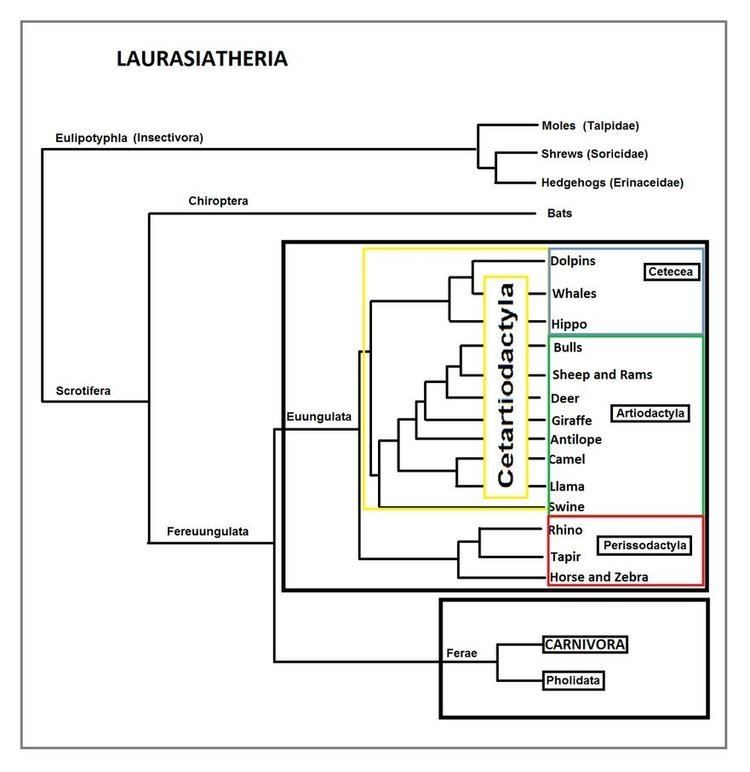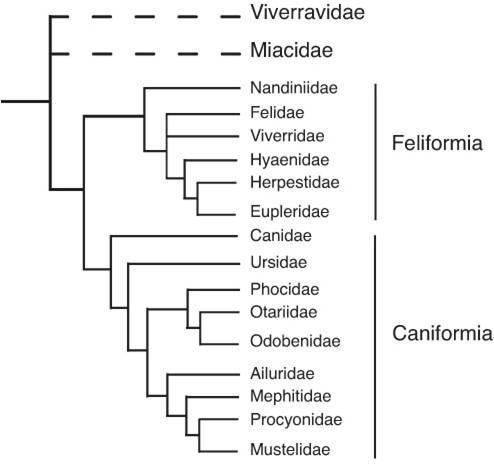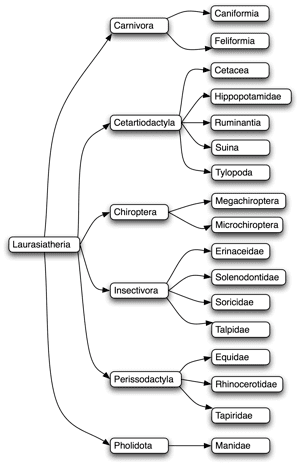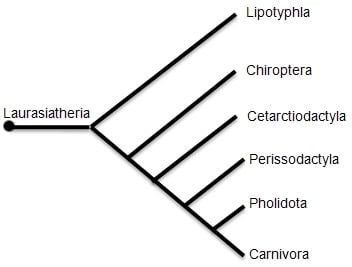Phylum Chordata Scientific name Laurasiatheria Rank Superorder | ||
 | ||
Lower classifications Carnivores, Even‑toed ungulate, Cetaceans, Bat, Ungulate | ||
Laurasiatheria is a superorder of placental mammals that originated on the northern supercontinent of Laurasia 99 million years ago. The superorder includes shrews, pangolins, bats, whales, carnivorans, odd-toed and even-toed ungulates, among others.

Classification and phylogeny

Laurasiatheria was discovered on the basis of the similar gene sequences shared by the mammals belonging to it; no anatomical features have yet been found that unite the group. Laurasiatheria is a clade usually discussed without a Linnaean rank, but has been assigned the rank of cohort or magnorder, and superorder. The Laurasiatheria clade is based on DNA sequence analyses and retrotransposon presence/absence data. The name comes from the theory that these mammals evolved on the supercontinent of Laurasia, after it split from Gondwana when Pangaea broke up. It is a sister group to Euarchontoglires (or Supraprimates) with which it forms the clade Boreoeutheria. Laurasiatheria includes the following extant taxa:
Uncertainty still exists regarding the phylogenetic tree for extant laurasiatherians, primarily due to disagreement about the placement of Chiroptera and Perissodactyla. Based on morphological grounds, Chiroptera had long been classified in the superorder Archonta (e.g. along with treeshrews and the gliding colugos) until genetic research instead showed their kinship with the other laurasiatherians. The studies conflicted in terms of the exact placement of Chiroptera, however, with it being linked most closely to groups such as Eulipotyphla, Ferae or with Perissodactyla and Ferae in the Pegasoferae proposal. A recent study (Zhou et al., 2011) found that "trees reconstructed [...] for the 1,608-gene data set fully support [...] a basal position for Eulipotyphla and a more apical position for Chiroptera" (see cladogram below) and concluded that "Pegasoferae [...] does [sic] not appear to be a natural group." The most recent study (Nery et al., 2012) supports the conclusions of Zhou et al. using a large genomic dataset, placing Eulipotyphla as a basal order and Chiroptera as sister to Cetartiodactyla, with maximal support for all nodes of their phylogenetic tree. The exact position of Perissodactyla remains less certain, with some studies linking it with Ferae into a proposed clade Zooamata while others unite it with Cetartiodactyla into Euungulata, a clade of 'true ungulates'; Zhou et al. found better (but not full) support for the latter, while Nery et al. found Perissodactyla to be sister to Carnivora.

Laurasiatheria is also posited to include several extinct orders and superorders. At least some of these are considered wastebasket taxons, historically lumping together several lineages based on superficial attributes and assumed relations to modern mammals. In some cases, these orders have turned out to either be paraphyletic assemblages, or to be composed of mammals now understood not to be laurasiatheres at all.



